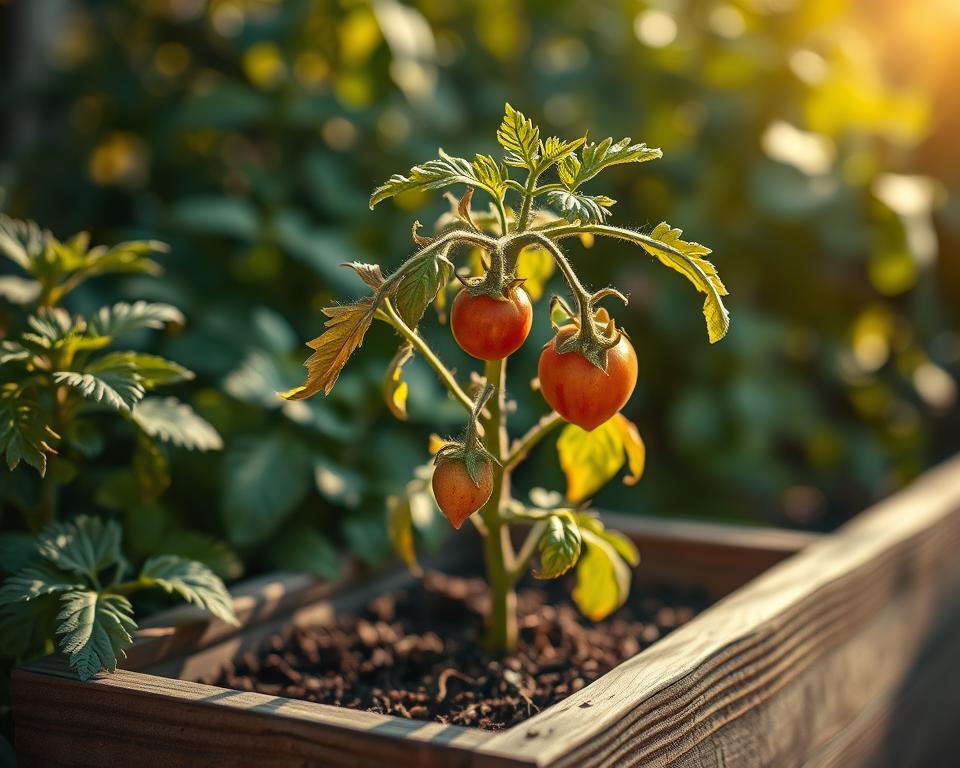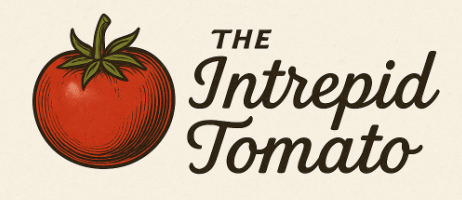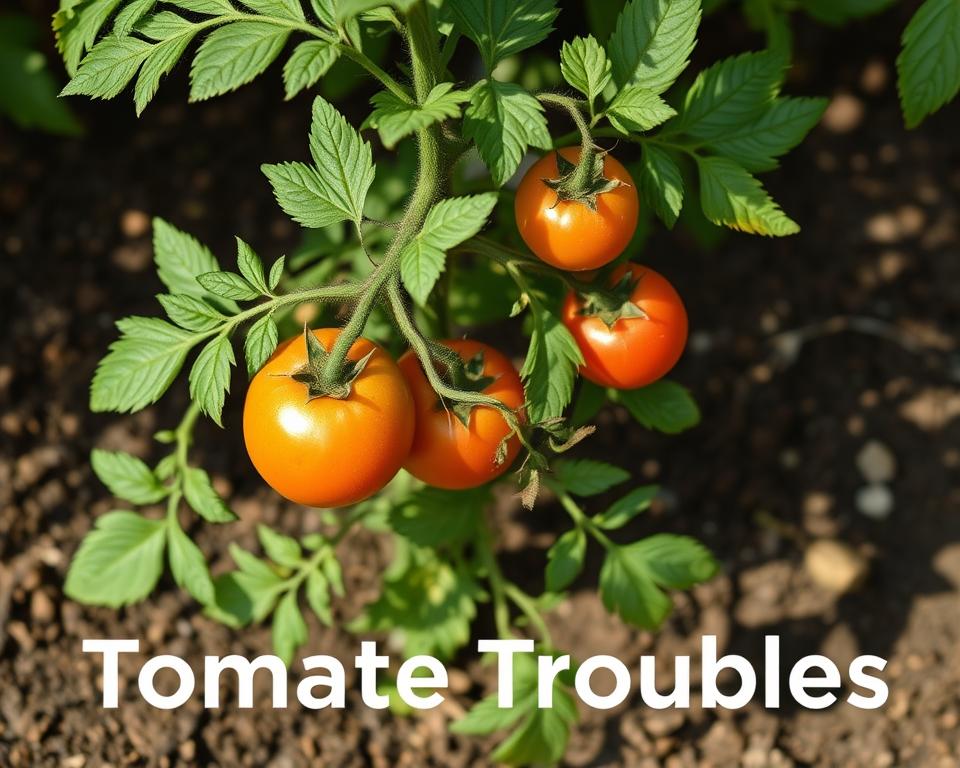Tomato Troubles: How to Diagnose and Cure 10 Common Plant Ailments
Growing tomatoes can be rewarding, but it comes with challenges. Tomatoes, the most popular vegetable in home gardens, face many diseases and pests. These can slow down their growth.
To grow healthy tomatoes, start with good gardening habits. Choose disease-resistant varieties and test your soil. Also, make sure they have enough space for air.
Knowing the causes of tomato plant diseases and tomato plant pests helps prevent and treat them. In this article, we’ll look at 10 common problems. We’ll also give tips on how to fix them, so you can enjoy a healthy harvest.
Why Healthy Tomatoes Matter in Your Garden
Healthy tomatoes are the highlight of any garden. They bring fresh produce all summer long. We’re proud when our tomato plants grow strong, with green leaves and lots of fruit.
Signs of a Thriving Tomato Plant
A healthy tomato plant grows well and stays disease-free. Look for green, healthy leaves and plenty of fruit. Watching your plants closely helps spot problems early, like yellowing leaves.
The Importance of Early Problem Detection
Finding problems early is key to keeping your tomatoes healthy. Regular checks help catch pests or diseases fast. This way, you can fix issues before they harm your crop.
Common Tomato Plant Problems and Their Warning Signs
Tomato plants can face many problems, like diseases and pests. Knowing about these issues helps keep your plants healthy and your harvest big.
Environmental vs. Disease-Related Issues
It’s important to tell apart environmental and disease problems. Environmental factors like weather, soil, and water affect plant health. For example, uneven watering can stress plants and make them sick.
Disease problems come from pathogens like fungi and viruses. Common diseases include early blight, septoria leaf spot, and fusarium wilt. Spotting these diseases early is key to treating them.
How to Assess Plant Symptoms Accurately
Watching your tomato plants closely is the first step. Look for changes in leaves and any signs of pests or diseases. Yellow leaves might mean a nutrient problem or fusarium wilt.
Knowing the common problems and how to spot them helps you act fast. This way, you can keep your tomato plants healthy and enjoy a great harvest.
Foliage Diseases: Spotting and Treating Leaf Problems
Healthy tomato plants can fall victim to foliage diseases. This makes it important to spot and treat them quickly. Diseases like early blight, septoria leaf spot, and powdery mildew can harm plants a lot. They can reduce yields and affect the plants’ health.
Early Blight: Yellow Spots with Concentric Rings
Early blight shows up as yellow spots with concentric rings on leaves. It loves warm, moist places. To fight it, remove infected leaves and make sure plants have good air flow.
Septoria Leaf Spot: Small Dark Spots with Yellow Halos
Septoria leaf spot makes small dark spots with yellow halos on leaves. It’s a fast-spreading fungal disease that thrives in wet weather. To stop it, remove infected leaves and use fungicides.
Powdery Mildew: The White Powder Menace
Powdery mildew looks like a white powder on leaves, turning them yellow and dying. It prefers dry conditions. Treat it with fungicides and improve air flow.
Knowing about these common diseases is key to keeping tomato plants healthy. Spotting symptoms early and treating them right can prevent big damage. This way, we can have a great harvest.
Wilting and Stem Issues: Causes and Cures
When tomato plants wilt or have stem problems, finding the cause is key. This helps us fix the issue right. Wilting and stem issues often mean a big problem with your tomato plants.
There are many reasons why tomato plants might wilt or have stem problems. We’ll look at three main diseases: bacterial wilt, fusarium wilt, and verticillium wilt.
Bacterial Wilt: The Sudden Collapse
Bacterial wilt makes tomato plants collapse quickly. The plant wilts fast, with no warning signs. The bacteria live in the soil and are hard to stop once they infect a plant. To fight bacterial wilt, we must remove and destroy sick plants to stop the disease from spreading.
Fusarium Wilt: Progressive Yellowing and Browning
Fusarium wilt turns tomato leaves yellow and brown slowly. This fungus blocks the plant’s water and nutrient flow. To fight fusarium wilt, we suggest using resistant tomato types and rotating crops to lower infection risk.

Verticillium Wilt: V-Shaped Leaf Yellowing
Verticillium wilt shows as V-shaped yellow leaves on tomato plants. This fungus also harms the plant’s water and nutrient flow. To manage verticillium wilt, we use resistant varieties and keep the soil healthy through crop rotation and avoiding too much nitrogen.
Knowing why tomato plants wilt or have stem problems helps us prevent and treat these issues. This way, we can ensure a healthy and bountiful harvest.
Fruit Disorders That Ruin Your Harvest
Dealing with fruit disorders in tomatoes can be really frustrating. These problems can hurt the quality and amount of your harvest. We’ll look at three common issues: blossom end rot, fruit cracking, and sunscald.
Blossom End Rot: The Calcium Deficiency Problem
Blossom end rot shows up as a dark, sunken spot at the fruit’s blossom end. It’s mainly due to a calcium deficiency, made worse by uneven watering. To avoid this, keep the soil moist and use calcium-rich fertilizers.
Fruit Cracking: Managing Inconsistent Watering
Fruit cracking happens when tomatoes get too much water too fast. This causes cracks on the fruit’s surface. To stop fruit cracking, water your tomatoes consistently. Mulching helps keep the soil moist and controls water intake.
Sunscald: Protecting Exposed Tomatoes
Sunscald affects tomatoes that get too much sun, causing them to become bleached or discolored. To prevent sunscald, make sure your tomatoes are shaded, mainly during the hottest times. Using row covers or planting shade-providing plants can help.
Managing fruit disorders like blossom end rot, fruit cracking, and sunscald is key to a healthy tomato harvest. By knowing the causes and taking preventive steps, you can improve your tomato plants’ health and yield.
“The key to a healthy tomato harvest lies in understanding and managing the common disorders that can affect fruit quality.”
Battling Tomato Pests in Your Garden
Tomato growers often face the challenge of pests damaging their plants. These pests can harm the health and productivity of tomato plants. This can lead to lower yields and quality fruit. It’s important to know how to identify and manage pests for a successful harvest.
Tomato Hornworms: Identification and Removal
Tomato hornworms are large, green caterpillars that can damage leaves and fruit. To control them, regularly check your plants and remove any hornworms you find. Hand-picking is an effective method, done often. For severe cases, use Bt (Bacillus thuringiensis) or organic pesticides.

Aphids: Controlling These Tiny Sap-Suckers
Aphids are small, soft-bodied insects that harm tomato plants by sucking sap. This can cause leaves to curl or distort. To manage aphids, start by spraying them off with water. For severe cases, use insecticidal soap or neem oil. These treatments are safe for plants.
Spider Mites: Eliminating Webbing and Damage
Spider mites are tiny, spider-like insects that can cause yellowing or bronzing of leaves. They also produce webs. To control spider mites, regularly inspect your plants and spray them with water. For heavy infestations, use miticides or insecticidal soap. Keeping your garden clean and well-watered can also help prevent spider mite infestations.
By understanding and addressing these common tomato pests, you can protect your plants. This ensures a healthier, more bountiful harvest. Effective pest control is key to treating tomato plant problems and keeping your garden healthy.
Treatment Options: From Organic to Chemical Solutions
Fixing tomato plant problems starts with knowing what’s wrong and picking the right fix. We have many choices, from natural to chemical solutions. Each has its own benefits and when to use them.
Natural Remedies for Disease Control
For a green approach, natural remedies work well. Copper-based products fight off many fungal diseases. Biofungicides, with their living microbes, are another green option. They’re good for the earth and effective against diseases.
When to Use Chemical Treatments
Sometimes, we need chemical treatments for tough problems. It’s key to know the issue and pick the right chemical. We must use them wisely to protect our plants, ourselves, and the planet.
Application Methods and Safety Precautions
Choosing organic or chemical treatments, how we apply them matters a lot. Always follow the label, wear protective gear, and apply at the best time. This keeps our tomato plants healthy and our garden safe.
Your Tomato Success Plan: Prevention Strategies for Next Season
Preventing problems is always better than treating them after they arise. To grow healthy and productive tomato plants, we need to focus on prevention strategies. Selecting disease-resistant varieties is a key step in preventing common tomato plant problems.
Improving soil health is also vital. We can achieve this by implementing good gardening practices like crop rotation and sanitation. By rotating crops, we reduce the risk of soil-borne diseases. By removing weeds and debris, we eliminate habitats for pests that can cause tomato plant diseases.
Effective tomato plant pests control is another essential aspect of a successful tomato harvest. By combining these strategies, we can minimize the risk of disease and pests, ensuring a bountiful harvest. Let’s take a proactive approach to growing tomatoes by incorporating these prevention strategies into our gardening routine.

